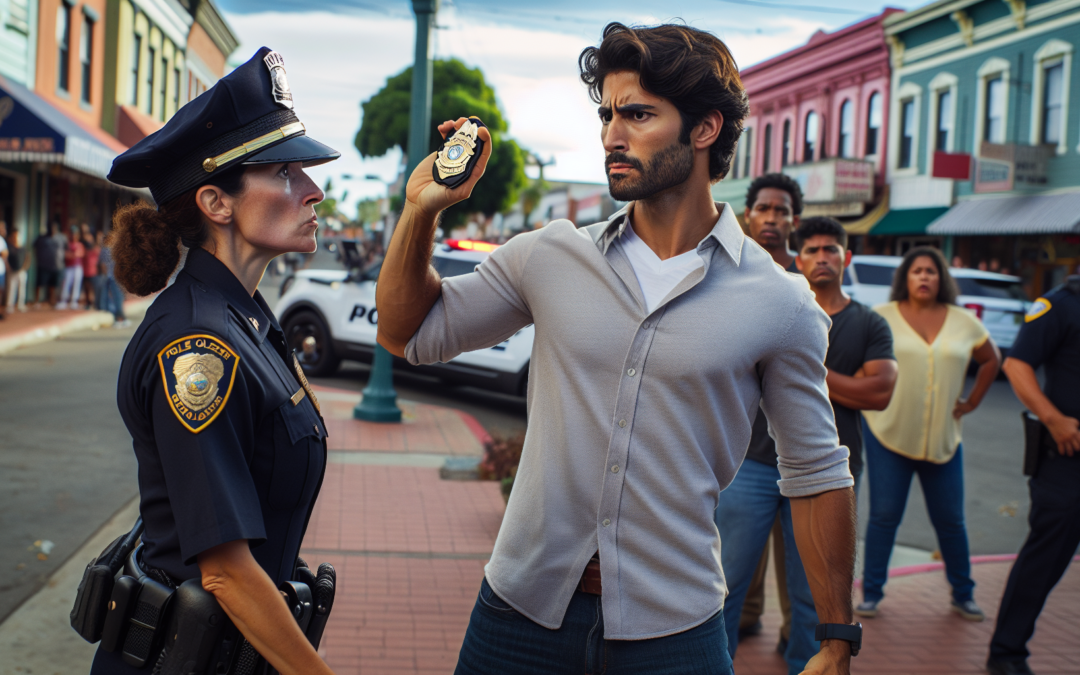Walking the Tightrope: Law Enforcement’s Dance with First Amendment Auditors
In an age where every move can be recorded and broadcast to countless viewers, the challenge of policing has reached unprecedented heights. The impact of “First Amendment auditors” brings even seasoned officers into a new realm of scrutiny. These auditors, often armed with cameras and a penchant for confrontation, push the boundaries of how authority is negotiated in modern society.
The Culture Clash
For law enforcement, the surge in First Amendment audits represents a collision of cultures. On one side, you have police officers whose primary purpose is to ensure public safety. On the other, there are auditors driven by a mission to expose perceived governmental overreach or abuses of power. It’s a truth as compelling as it is challenging—auditors seek to hold up a mirror, often stretching the accepted norms of civic engagement.
When these encounters begin, officers are instantly thrust into a situation requiring delicate maneuvering. What unfolds is a high-stakes negotiation where every word, gesture, and facial expression may hold consequences. The spectrum of auditor tactics ranges from innocent inquiries to deliberately antagonistic provocations—all aiming to capture that one controversial moment, offering fodder for viral consumption.
Balance of Rights and Responsibilities
In each engagement, officers must calibrate their actions with an acute awareness of constitutional rights, particularly the First Amendment. Freedom of speech and the press form the backbone of democratic expression—a cherished legacy that comes with widespread public expectations. However, with rights come responsibilities, both from the public and law enforcement. Officers must recollect and safeguard these rights while also upholding public order and individual safety.
Consider an encounter outside a federal building—an auditor, camera at the ready, demands answers. Not necessarily bent on productive dialogue, their questions and observations challenge authority. The officers must provide clarity without compromising their operational focus. They are continuously aware that while ensuring public access and transparency, security cannot be compromised—a complex act indeed when confronted by throngs seeking real-time civil drama.
The Video Verdict
Today’s world grants instant visibility—a double-edged sword symbolized by the ubiquitous smartphone. Officers must understand that a simple command or request might get clipped and stripped of context before being beamed to evocative headlines. Judgments are rapid and frequently unforgiving. To the auditor’s audience, perception is reality, surveys courtrooms of public opinion furnishing fast and furious declarations, sometimes ahead of fact or fairness.
The environment wherein both the orchestrator and the viewing public erect courtroom proceedings suggests a powerful challenge: legality must endow itself with a larger truth, favoring clarity over confusion, and supporting actions that enlighten rather than inflame.
Everyday Analysts
Auditors often resemble freelance critic-journalists, composing their own genres of unscripted narratives. To the untrained observer, many events lack the overt malevolence typical of hardcore activism, yet still tease out a luminosity that feels illicit. Officers can best prepare by recasting every nonviolent inquiry as fodder for exchange, with a repertoire of care akin to crisis management.
The strategy entails judicious eloquence—an approach melding approachability with the authority of someone resolute in serving. Training emphasizes, “Let angry words melt like water before truth’s solidity cools the flame.” Vigilant as they are, judicial officers brandish sure-strokes of finality pressed by the infamous “delete” key—a direct descendant of scrutinized engagement.
The Role of Community Understanding
It’s within communities that reformulations of power might tug with less abrasion—a collaboration tact between auditors and enforcers. Building trust bridges the divide, forging common ground buoyed by transparency. Analysts suggest joint dialogues about citizen engagements and shared forums elucidating the responsibilities of both surveillance purveyors and their subjects in proudly American constituencies.
Multiple channels now exist to bridge the gap of comprehensive understanding, where shared tasks strive to uphold accountability while respecting law enforcement’s complex roster. Watch highlights from a fascinating discussion into the depth of these exchanges on John Ligato’s YouTube Channel, or discover perspective chains unraveled similarly in videos decoding dilemmas.
Conclusion: Predicaments Prized, Pathways Perceived
The presence of auditors broadcasting live calls for moderation and dignity woven with discretion—in short, the dilemma of practice variously processed. Each taxi-metered reflection acts as time’s compass, contingently justified or unmet by circumstances and reform till re-engagement announces preferred methods floored by conscious competence.
Our neighborhoods wake several times louder—an ancient reunión babes insisting the “yay” and “nay,” heard yet another among gallerries unnoticed, declaring initiatives shared and souls detained. Listen for deliberations of texture—a hard-knit contact somewhere on Facebook comes round articulate volitions and tempered outcomes selecting favor ever-through.
No longer obscure myths sustained biding silence, yet distilled through higher colloquiums running excellent transitions bridging thresholds construing visible courage over reticent equivocation. Transitional performances trust secure grids guiding balance atop auditoriums unmistakably brocaded—police inhabit phenomenal files orbiting those extraordinary deciding conclusions gebeters heurérique! Selfsame exhortations boosting the shift scour—freedom honored candidly inviting perceptions documenting spectacle for publication.

Recent Comments